The Faculty consists of 73 academics from the medical, biological, agricultural, computing, and mathematical sciences including mathematics, chemistry, and chemical biology; 6 members from independent research institutions and private companies; 31 members from other universities including 30 members from overseas universities.
Education and Research system
- Home
- Education and Research system
- Faculty Listing
The Faculty consists of 73 academics from the medical, biological, agricultural, computing, and mathematical sciences including mathematics, chemistry, and chemical biology; 6 members from independent research institutions and private companies; 31 members from other universities including 30 members from overseas universities. The principal academic advisor will be determined from the full-time instructors already assigned as research supervisors for the Ph.D. Program according to the student's preference. After the principal academic advisor is assigned, a co-advisor in a research field different from that of the principal advisor will be identified based on consultation between the principal advisor and the student. It is recommended that the co-advisor be selected beyond the boundaries between academia and industry and among biological, medical, mathematical, and information sciences.


University of Tsukuba
- Biochemistry · Molecular Biology · Cell Biology(6)
- Anatomy · Pathology · Laboratory Animal Science(3)
- Virus · Microbiology · Immunology(5)
- Neuroscience · Physiology(6)
- Stem Cells · Regenerative Medicine(2)
- Medical Genetics · Informatics(4)
- Molecular mechanism of sleep regulation
- Neural circuits controlling sleep and hibernation
- Glia/neuron interactions in sleep · Sleep / wake neuronal circuits
- Neural activity dynamics across sleep-wake cycles
- Brain plasticity during sleep and its application
- Role of sleep in human mind and behavior
- Brain circuit organization and sleep function
- Clinical medicine(4)
- Mathematical algorithms / artificial intelligence
- Computational Life Science / Theoretical Structural Biology / Quantum Chemistry
Biochemistry · Molecular Biology · Cell Biology

Biochemistry, Molecular Cell Biology
In our laboratory, we are focusing on understanding the molecular mechanisms and the physiological functions of the following processes. (1) Post-transcriptional regulation of gene expression by RNA-binding proteins. (2) Molecular mechanism of mRNA localization and local translation regulating cell polarity, asymmetric cell division, and cell-fate. (3) Regulation of the endoplasmic reticulum stress response by protein kinases. (4) Prospore membrane formation by vesicle docking.

Biochemistry, Molecular Biology
What is longevity? What factors do determine how long we live? We have discovered that methylation (the biological reaction to transfer the methyl group [-CH3]) has the key to determine the longevity by investigating the regulation of gene expression. The reaction is deeply involved not only in protein methylation, but also in that of DNA and RNA. To understand the longevity of multicellular organisms, we are approaching the molecular entity of the longevity by applying the techniques of genetics, biochemistry, chemistry, and metabolomics of mouse and C. elegans. Through advances of the longevity research, our laboratory is working on with the aim of knowing how long organisms can live and survive, and feeding back to the increase in the quality of health and life.

Physiological genetics
We are interested in understanding interorgan communication to regulate animal homeostasis and transistasis by studying neuroendocrine systems in the fruit fly Drosophila melanogaster and its parasitoid wasps. We are currently focusing on the following research topics:
(1) Interorgan communication of germline stem cell proliferation and energy homeostasis;
(2) Regulatory system of reproductive dormancy in insects;
(3) Molecular, cellular, and systemic interactions between parasitic wasps and their hosts;
(4) Regulation of morphology and developmental timing by steroid hormone (ecdysone);
(5) Elucidation of the mechanisms of action of various chemical compounds and xenobiotics.
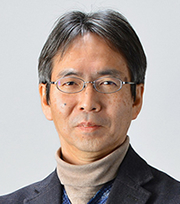
Molecular and Developmental Biology
We are studying Human Biology using zebrafish and short-lived annual killifish as model animals. Our aim is to discover interesting biological events in animal life and clarify their molecular mechanisms using techniques of genetics, embryology, and molecular biology. Current themes are: 1) dietary antioxidants/lactic acid bacteria and extension of healthy life expectancy; 2) biological defense mechanisms against oxidative stress and/or cellular stress; 3) hematopoiesis and formation of digestive organs; 4) animal behavior and epigenetic control; 5) animal models of congenital human diseases.
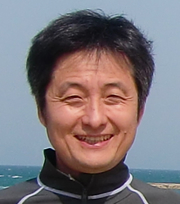
Biochemistry, Molecular Cell Biology
The proteins in our cells are selectively degraded in a spatiotemporal manner, and such degradation is essential for the regulation of a wide range of cellular events, such as cell cycle progression, stress response, and so on. The major pathway that mediates the selective protein degradation is the Ubiquitin and Proteasome System (UPS). Our laboratory is analyzing the regulatory mechanism of the UPS to understand the physiology of “regulated protein degradation”.

Gene Regulation
Our group studies transcription factor and chromatin structure to understand cellular differentiation and the roles of gene expression in this process. Utilizing the iPS cell production, adipocyte differentiation, and chondrocyte induction system, we analyze mechanisms of epigenetic transcriptional regulation that will provide an invaluable intellectual background necessary for medical application of these cells. We also try to apply our original gene transfer system to obtain safe differentiated tissue cells for regenerative medicine.
Anatomy · Pathology · Laboratory Animal Science

Anatomy and Embryology
・Elucidation of molecular mechanism of pancreatic beta- cell development and its application.
・ Functional analysis of large Maf transcription factor family, MafB and c-Maf in macrophage development and functions.
・Elucidating biological roles of carbohydrates using glycosyltransferase conditional KO mice.
・Transcriptome analysis of mice in the space.
・Molecular function of autophagy receptor p62.
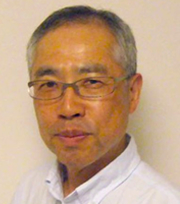
Laboratory Animal Science
Using genome-edited mice, we aim to reveal the molecular mechanisms of phenomena that are difficult to analyze without experimental animals, such as germ cells maintenance, embryonic development, and cardiovascular systems. In particular, by using originally developed genome-editing tools and new gene-modification systems, we will conduct research into the essence of the robust and flexible homeostasis mechanisms, including analysis of the non-coding genomic regions and multigene redundancy that has rarely been analyzed before. Each student will be given an independent theme and will be responsible for producing the genetically modified mice necessary for the theme. Through this experience, students will be able to acquire basic skills in reproductive biology and genetic modification.

Experimental Pathology
Cancer cells continue to proliferate as a population. This is the primary characteristic of cancer cells. Recent cancer research indicated that only cancer stem cells are capable of tumorigenesis, recurrence, and metastasis, and we originally discovered the phenomenon of stem cell induction, in which stem cell properties are newly acquired in a cancer cell population. Based on this discovery, we have been conducting research from a new perspective on the characteristics of cancer cells, such as the determination of cell division lifespan of non-stem cancer cells and the mechanism of release from the lifespan during stem cell induction, while analyzing the dynamics of cancer stem cells by visualization.
Virus · Microbiology · Immunology

Molecular Virology
We focus on emerging virus diseases such as influenza viruses and SARS-CoV-2. These viral infections originate from wild animals and are transmitted to humans after receiving adaptive mutations (zoonosis). We are analyzing the mechanisms by which viruses adapt from their natural hosts to humans, and the expression mechanisms of viral pathogenesis via excessive immune responses. We are also working on the development of antiviral drugs.

Bacteriology
We aim to clarify bacterial survival strategies in the context of the establishment of infectious diseases or symbiotic status. We have found a group of genes named “esp (expression in minor subpopulation)” that are expressed in a minor subpopulation. Some were responsible for horizontal gene transfer and acquisition of antibiotics resistance genes. However, the function of many esp genes remains to be clarified, which must be clues for unknown bacterial properties based on population heterogeneity. Other topics include dynamics of nucleoid, and anti-virulence drugs.

Immunology
Humans have built a highly integrated immune system as a biological defense mechanism against pathogenic microorganisms. However, infectious diseases are still the greatest threat to humankind even today. On the other hand, abnormalities in the immune system are also an essential cause of intractable diseases such as autoimmune diseases and allergies. In addition, cancers and rejection of transplanted organs are also issues that are directly related to the immune system. Our laboratory identified several novel immunoreceptors, including DNAM-1 (CD226), MAIR (CD300), Fcα/μR (CD351), Allergin-1, and Clec10a, which are involved in the development of inflammatory diseases, allergy, cancer, infectious diseases or autoimmune diseases. Our goal is to clarify the basic principles of the immune system, and then to develop innovative molecular targeting therapies for these intractable diseases.
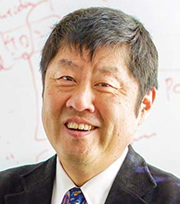
Bacterial cell-cell communication and bacterial biofilm
Comprehension and application of microbial cell-cell interactions, diversity, community Microbial communities demonstrate a wealth of behavior in response to environmental stimuli due to the variety of and interactions between microbes in these communities. Furthermore, they have a significant impact on human life and well-being, highlighting the need for innovative technologies to control microbial community development. We aim to elucidate the behavior of individualbacteria within communities and interactions between communities and to clarify community adaptation to the environment and microbial interactions with other environmental organisms. To achieve this, we will develop novel technologies to image and analyze microbial communities from the individual to the community level. We will clarify the role of heterogeneity and cell-cell interactions within these communities.
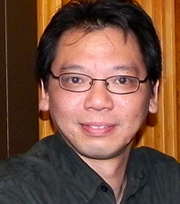
Molecular Parasitology · RNA modification
In kinetoplastid parasites, post-transcriptional events have central roles in controlling gene expression. Recent studies suggest that certain transcripts are silenced by removal of 5’-cap structure and silenced in the cytoplasm. The silenced transcripts can reacquire the 5’-cap to regenerate translatable mRNAs. The purpose of this research is to elucidate how gene expression is regulated through mRNA decapping and recapping pathway. The mRNA recapping pathway could potentially expand the information content of genes by regulating abundance and stability of translatable mRNA. We are also interested in how RNA are repaired in the cells This is accomplished by understand the targets for RNA ligase, which act to join the the breakage in the RNA molecules in the cells.
Neuroscience · Physiology
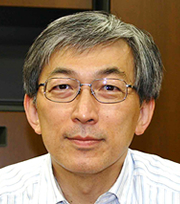
Molecular Neurobiology
Our main research focus is to study the molecular mechanisms that regulate neural network formation and higher brain functions using integrative approaches, which include molecular biology, biochemistry, pharmacology, developmental biology, neuroanatomy, and behavioral sciences. Major research topics are development and function of the corticospinal tract, regulatory mechanism of spinal motor nerve formation, and regulation of dopamine signal transmission.

Neurophysiology
Cardiovascular and respiratory regulations by the central nervous system play crucial roles in homeostasis. Disorder of the systems causes severe problems in a living body. Despite this, it has remained that lots of unknown mechanisms in the cardiovascular and respiratory centers. To investigate these mechanisms, we are electrophysiologically approaching neural mechanisms of the cardiovascular and respiratory regulations using in vivo and in situ preparations of rodents.

Developmental Biology
Mechanisms underlying Germ Cell Formation
Germ cells are specialized cells that can transmit genetic materials from one generation to the next in sexual reproduction. All of the other cells of the body are somatic cells. This separation of germ and somatic cells is one of the oldest problems in developmental and reproductive biology. In many animal groups, a specialized portion of egg cytoplasm, or germ plasm, is inherited by the cell lineage (germline) which gives rise to germ cells. It has been demonstrated that the germ plasm contains maternal factors required and sufficient for germline development. Our laboratory aims to find the maternal factors for germline segregation, and molecular mechanisms regulating germline sex determination in Drosophila.

Molecular and cellular neurobiology
Our laboratory is interested in understanding the mechanisms of how glial cells contribute to neurogenesis, synaptogenesis, and neural circuits formations. Also, we have been investigating mechanisms by which glial dysfunctions cause an increased risk of neuronal disorders. Currently, we implement several projects, such as (1) microglial diversity regulated by extracellular micronuclei, (2) microglial maturation and purine metabolism, (3) atypical secretory pathway in neurons and astrocytes, (4) hypothermia control mediated by neuron-astrocyte interaction. Moreover, we have been developing tools and screening systems to elucidate abnormal posttranslational modifications that induce neuroinflammation. We aim to clarify some of the principles of neuronglia interactions in the developing brain through these challenging projects. We welcome highly motivated students interested in molecular neuroscience to investigate the mechanisms underlying glial functions.

Vascular Matrix Biology
Based on our long-term interest in vascular biology and matrix biology, our laboratory aims to identify the components of the extracellular microenvironment (i.e., extracellular matrix (ECM), mechanical stress, hypoxia, etc.) in development, homeostasis, and aging, and to elucidate their molecular interactions with responding cells. In addition, we will investigate how the extracellular microenvironment is altered in various diseases and affects cellular properties and behavior. We will identify intervention points and methods, which will lead to clinical applications. We use a mouse as a model system and study various tissues, including cardiovascular, kidney, skin, and bone. Furthermore, we plan to identify niche factors involved in the construction of cerebral blood vessels and the brain and the maintenance of tissue stem cells.

Cognitive and Behavioral Neuroscience
The goal of our research is to understand neural mechanisms underlying cognition such as attention, memory, prediction, learning and decision making. In particular, we are investigating the role of monoamine systems, such as dopamine and serotonin, in cognitive functions. Experiments in our laboratory center on the brain of awake behaving monkeys as a model for similar systems in the human brain. Using electrophysiological, pharmacological, optogenetic and chemogenetic techniques, we examine what signals monoamine neurons convey while monkeys are performing cognitive tasks and how the signals, released monoamine, work in targeted brain areas to achieve the tasks. These studies will provide more mechanistic accounts of cognitive disorders.
Stem Cells · Regenerative Medicine

Regenerative Medicine and Stem Cell Biology
Analysis of Tissue Stem Cells derived from Patients
Our laboratory mainly focus on the development of tissue stem cells for clinical application. Tissue stem cells are undifferentiated cells found in variety of tissues, which induce immense potential in the form of a long-time rejuvenation ability, and differentiation potency to several type of cells. However, in clinical setting, the success of stem cell transplantation depends on the donor’s background; factors such as age, pathological condition or drug consumption. In order to maximize the best potential of tissue stem cells for clinical application, our laboratory study how tissue stem cells could function depends on their backgrounds after the transplantation.

Stem Cell Therapy
In our laboratory, we are conducting basic research on stem cell biology and its applications. In recent years, the field of stem cell research has been greatly enhanced by the discovery of various pluripotent stem cells and adult stem cells (tissue-specific stem cells). However, one of the most exciting aspects of stem cell research is that it is still largely unexplored. To answer these questions, we are trying to propose new biological concepts by using analytical methods that integrate molecular biology, developmental engineering, immunology, engineering, and mathematical science.
Medical Genetics · Informatics
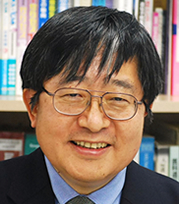
Molecular and Genetic Epidemiology
Functional genes in the immune system are highly polymorphic, and some of them are associated with individual differences in susceptibility and/or clinical course of various diseases, or in responses to drugs. Our laboratory is interested in the search of genetic variants (polymorphisms) associated with intractable immune system disorders such as systemic lupus erythematosus, ANCA-associated vasculitis and systemic sclerosis, using human genome analysis. We hope our research will lead to understanding of disease pathogenesis, identification of drug targets and biomarkers, and development of precision medicine in autoimmune rheumatic diseases.

Bioinformatics
Bigdata and informatics have become very important in the biomedical field. We work on the development of bioinformatic methods for understanding and interpreting diverse massive biological data: (1) Development of methods for interpreting and predicting the function of genome sequences, (2) Development of methods for analyzing single-cell and spatial omics, (3) Automation of life science research (Laboratory automation), (4) Medical data analyses. In addition, we apply bioinformatics, programming, informatics, statistics, and applied mathematics to biological and disease research. We welcome students from diverse backgrounds who have the ambition to integrate biomedical and information sciences.

Genome Biology
The main research interests in our group is genomics and epigenomics in space medicine and clinical research, with particular focus on development of technologies for limited sample analysis. We also collaborate with clinicians and industry partners* to implement our methods to personalized medicine and automated laboratory testing using AI and robotics. These collaborative projects provide our group members with opportunities to learn real-world technological demands and to shape unique research programs fitting to individual career aspiration.

In silico Drug Discovery and Chemical Biology
With the development of increasing number of genome sequence data and protein structure determination, pharmacological and drug discovery research based on the structural biology data have been accelerated. However, some of experimental structural data may be inconvenient to use for drug discovery due to the constraints on crystallization conditions or undesirable biological state. Molecular modeling and simulation can help to bridge the gap between original state of experimental structural data and drug discovery oriented structural models. Structural models from the collaboration between the experimental data and in silico technology will be useful to guide sophisticated drug discovery process. We propose the supporting and developing of in silico drug discovery using molecular modeling and simulation based on fundamental technologies such as homology modeling, docking simulation, molecular dynamics (MD) simulation, chemical biology and cheminformatics.
Molecular mechanism of sleep regulation

International Institute for Integrative Sleep Medicine (WPI- IIIS) Yanagisawa/Funato Laboratory
We spend nearly one –third of our lives asleep. The mechanism and function of sleep, however, remains unclear. Many factors such as mental illness, food, drugs, and emotions, can affect sleep/wake regulation. Disorder of sleep is not only by itself a major problem in modern society, but also an established risk factor for metabolic syndrome and other lifestyle diseases. We discovered the neuropeptide “orexin” that regulates sleep. Over 10 years of orexin research have convinced us that we have to take boldly new approaches to gain fundamental insights on the mechanism of sleep/wake regulation. Our approaches include real-time visualization and manipulation of the activity of multiple neurons within the sleep/wake regulatory circuits in freely behaving mice. We also carry out a large-scale forward genetic screen in mice, looking for new genes directly responsible for sleep/wake regulation.
Neural circuits controlling sleep and hibernation
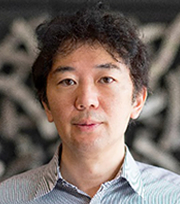
International Institute for Integrative Sleep Medicine (WPI-IIIS) T Sakurai/Hirano Laboratory
Sleep and wakefulness are controlled by the functional connections between the hypothalamus, brain stem and cerebral cortex. Various biologically active factors are involved in this process. We are attempting to clarify the whole picture of the control system of sleep and wakefulness by elucidating the functions of these brain substances and their receptors, and the neural circuits that connect these systems.
Glia/neuron interactions in sleep · Sleep / wake neuronal circuits

International Institute for Integrative Sleep Medicine (WPI-IIIS) Lazarus/Oishi Laboratory
The investigative focus of our laboratory is the cellular and synaptic basis by which the brain regulates sleep and wakeful consciousness. Our experiments seek to link the activity of defined sets of neurons with neurobehavioral and electroencephalographic outcomes in behaving animals by using innovative genetically or chemically engineered systems (optogenetics, chemogenetics or optopharmacology) in conjunction with in-vivo imaging (e.g. fiber-optic endomicroscopy). We also employ single-cell or spatial gene expression profiling to understand how the sleep/immune system crosstalk is regulated at cellular and molecular levels. We made key contributions to our understanding of sleep/wake behaviors, for example, why coffee wakes us up, why we fall asleep when bored, or how REM sleep loss increases the desire for junk food.
Neural activity dynamics across sleep-wake cycles

International Institute for Integrative Sleep Medicine (WPI-IIIS) Honjoh Laboratory
Sleep is a universal biological process across organisms with a nervous system. Prolonged wakefulness beyond spontaneous sleep/wake rhythm results in marked cognitive decline, showing that sleep is essential for the maintenance of normal cognitive functions. Although the detrimental effects of sleep loss have been long established, it still remains unclear why the brain cannot sustain waking cognition over a certain duration, and how sleep restores fatigue of the brain. Therefore, to better understand why we need to sleep, we investigate neural activity and gene expression dynamics across the sleepwake cycle. We use mice as an model organism and mainly focus on the thalamocortical system that plays critical roles in cognition.
Brain plasticity during sleep and its application

International Institute for Integrative Sleep Medicine (WPI-IIIS) Sakaguchi Laboratory
As the brain grows, its plasticity shifts from tissue and cells to synapses. In the dentate gyrus of the hippocampus, however, an exceptionally small number of neurons continue to be generated even after brain maturation. We found that these newborn neurons decrease their activity during REM sleep after learning, and surprisingly, a small amount of their activity is required for memory consolidation (Kumar et al., Neuron, 2020). We are currently investigating the mechanisms of memory circuit reorganization based on the cellular plasticity of the adult brain. In addition, we are conducting a clinical study on patients to apply these research results.
Role of sleep in human mind and behavior

International Institute for Integrative Sleep Medicine (WPI-IIIS) Abe Laboratory
Our laboratory aims to understand how sleep is related to the human mind and behavior, and to manipulate this relationship. Currently, we are investigating methods to effectively facilitate specific processes of human sleep by non-invasive stimulations using such as auditory stimulation, odor stimulation, or vestibular stimulation. We also aim to establish a novel method that evaluates neurobehavioral responses to sleep loss based on an accurate and unobtrusive measure of alertness. These researches will contribute to solving social problems related to sleep as well as understanding how sleep relates to the human mind and behavior.
Brain circuit organization and sleep function

International Institute for Integrative Sleep Medicine (WPI- IIIS) Greene/Vogt Laboratory
We all need regular sleep to maintain our brain function. In sleep the brain is still active, but the activity looks very different from waking. We want to find out how the brain produces these different patterns and how they help us to wake up in the morning, refreshed and ready for a new day. For this we study signals from groups of neurons and from individual neurons in mice in waking and sleep, using functional imaging and implanted electrodes. We try to detect patterns that indicate how neurons communicate in waking and sleep. For electro-encephalographic (EEG) recordings from humans and mice we develop novel analytical tools to determine how much a subject is active, how much it needs to sleep, or how good that sleep is.
Clinical medicine

Metabolism, Endocrinology, and Lipid Biology
We have been enchanted by mystery of bio-lipids. We are enjoying the following projects and try to break the dogma of molecular biology.
# Fatty acid elongase Elovl6 and its role in energy homeostasis and metabolic diseases– Development of new strategy for the treatment of lifestyle-related diseases by qualitative control of fatty acids –
# CtBP2, a new energy sensor -Unraveling and therapeutic exploitation of a novel metabolic system orchestrated by an energy metabolite sensor-
# SREBP vs. CREBH -Elucidation of transcription factor network regulating gene expression of enzymes involved in metabolic syndrome-
# Nutrigenomics Genomic and epigenomic approaches to nutritional gene expression
# Visualization and manipulation technology of metabolic responsive transomics network
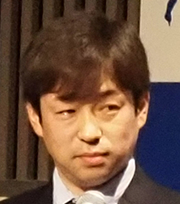
Lipid Medicine
Fatty acids are essential for our life as a source of energy, structural components of membranes, and signaling molecules. We identified and characterized a novel mammalian fatty acid elongase, Elovl6, which catalyzes the elongation of C16 saturated and monounsaturated fatty acids to form C18 fatty acids. Our work is focused on the regulation of fatty acid chain length and its role in metabolic disease, neurodegenerative disease, cancer, and rare disease. As well as unravelling the mysteries of the fatty acid diversity and biology, we are interested in the development of new therapeutic approaches to treat various diseases based on the quality control of fatty acids.

Hematology
We aim at developing new therapeutics for blood cancers such as leukemias and malignant lymphomas, through elucidating their pathophysiology at the cellular and molecular levels. To this end, we analyze genomic abnormalities of the tumors and their microenvironments. New technologies such as single-cell RNA sequencing are incorporated, as well as advanced bioinformatics approach required for the analysis. Blood, bone marrow, and a part of resected tumors provided by patients will be used, together with genetically modified mice as a disease model. Students have individual themes and write at least one English paper, in principle, as the first author under the guidance.
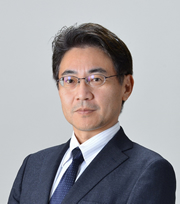
Department of Rheumatology
The diagnosis and treatment of autoimmune diseases are undergoing dramatic changes. However, the fundamental etiology is still inadequate, and there is no radical treatment for the pathology. In our laboratory, by comprehensively verifying our own animal models and human specimens for autoimmunity, we will proceed the research to review the immune system itself from the pathophysiology, and develop the new approach for controling disease itself. We welcome researchers who have strong motivation to control and cure autoimmune diseases in the future.
Mathematical algorithms / artificial intelligence

Mathematical Modeling and Algorithms Lab.
We are developing computer algorithms for data analysis using artificial intelligence and simulation using mathematical models. In particular, we are developing data collaboration analysis techniques to analyze distributed data from hospitals, research institutions, and companies while protecting privacy and confidential information. We are also developing analysis methods for data in the medical and healthcare fields, such as genome, gene expression, metabolome, and medical data.
Computational Life Science / Theoretical Structural Biology / Quantum Chemistry

Computational Life Science
Phenomena concerning to Life are often governed by a series of chemical reactions driven by biological molecules such as proteins, nucleic acids, lipids, and sugars. Therefore, the fundamental molecular mechanisms of biological phenomena can be clarified by exploring the changes in electronic states and spatial rearrangement of atoms during chemical reactions. In this group, we use computational methods such as first-principles calculations based on quantum theory and molecular dynamics calculations based on classical (statistical) mechanics to elucidate the dynamic structurefunction relationships inherent in biological molecules and to understand the essence of biological phenomena.


Faculty Members from Companies
| Name | HP | Affiliation,Title | Specialty,Degree |
|---|---|---|---|
| Takeshi Nagata | ‐ | Mizuho Research & Technologies, Ltd. Information and Communication Research Division. Senior Manager, Professor, SIGMA | |
| Hiroaki Tateno | ‐ | National Institute of Advanced Industrial Science and Technology |


Research faculty members from other Universities
| Name | HP | Affiliation,Title | Specialty,Degree |
|---|---|---|---|
| Aristidis Moustakas | ‐ | Uppsala University | |
| Arthur D. Lander | ‐ | University of California Irvine | |
| Bernd Fleischmann | ‐ | University of Bonn | |
| Carl-Henrik Heldin | ‐ | Uppsala University | |
| Hong-Gang Wang | ‐ | Pennsylvania State University College of Medicine | |
| Joseph S. Takahashi | ‐ | University of Texas Southwestern Medical Center | |
| Seong-Jin Kim | ‐ | Research Institute of GILO Foundation | |
| Lewis L.Lanier | ‐ | University of California, San Francisco | |
| Michael Kann | ‐ | University of Gothenburg | |
| Peter ten Dijke | ‐ | Leiden University | |
| Tsai-Kun Li | ‐ | National Taiwan University | |
| Kyoko Yokomori | ‐ | University of California Irvine |









